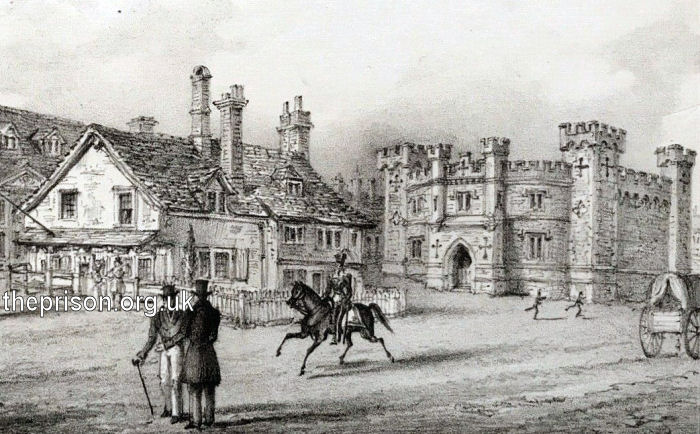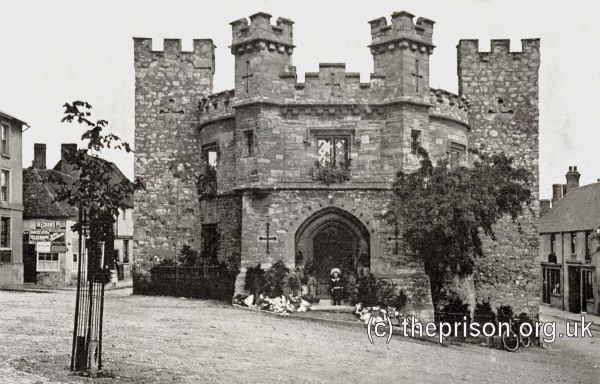Borough Gaol, Buckingham, Buckinghamshire
Buckingham's Borough Gaol, on Market Hill, was erected in 1748 by Richard Grenville Temple. A board over its gate carried the inscription: 'The Right Honourable Richard Grenville Temple, Lord Viscount Cobham, caused this Edifice to be erected at his own Expence, For the Use of this Town and County, the Summer Assizes being restored to this Place, and fixed here by Act of Parliament, in the year 1748.' Although some distance from the site of the town's old castle, the prison was known as the Castle Gaol, reflecting is castle-like appearance.
In 1784, John Howard described the gaol as 'Two rooms below; one of which is the bridewell: the other for felons 16 feet by 12. Over these are two rooms for debtors. No water. Gaoler no salary. Keeper's salary, £2. Clauses against spirituous liquors not hung up.' On a visit in October 1779, he had found the only inmate to be a 'raving lunatic'. In April 1782, the prison had been empty.
In 1812, James Neild reported that:
In 1839, cells and the round-fronted gaoler's house were added to the building, for which George Gilbert Scott was the architect.

Borough Gaol, Buckingham, 1847.

Borough Gaol, Buckingham, early 1900s. © Peter Higginbotham
The prison was closed in 1878 following the nationalisation of the prison system. The building was subsequently used as a police station, a fire station, an air-raid shelter, an ammunition store and an antiques shop. In 1984, after several threats of demolition, the building was taken over by a charitable trust and now houses a museum and tourist information office.
Records
Note: many repositories impose a closure period of up to 100 years for records identifying individuals. Before travelling a long distance, always check that the records you want to consult will be available.
- Centre for Buckinghamshire Studies, County Hall, Walton Street, Aylesbury, Bucks HP20 1UU.
- The National Archives, Kew, Richmond, Surrey, TW9 4DU. Has a wide variety of crime and prison records going back to the 1770s, including calendars of prisoners, prison registers and criminal registers.
- Find My Past has digitized many of the National Archives' prison records, including prisoner-of-war records, plus a variety of local records including Manchester, York and Plymouth. More information.
- Prison-related records on
Ancestry UK
include Prison Commission Records, 1770-1951
, and local records from London, Swansea, Gloucesterhire and West Yorkshire. More information.
- The Genealogist also has a number of National Archives' prison records. More information.
Bibliography
- Higginbotham, Peter The Prison Cookbook: A History of the English Prison and its Food (2010, The History Press)
- Brodie, A. Behind Bars - The Hidden Architecture of England's Prisons (2000, English Heritage)
- Brodie, A., Croom, J. & Davies, J.O. English Prisons: An Architectural History (2002, English Heritage)
- Harding, C., Hines, B., Ireland, R., Rawlings, P. Imprisonment in England and Wales (1985, Croom Helm)
- McConville, Sean A History of English Prison Administration: Volume I 1750-1877 (1981, Routledge & Kegan Paul)
- Morris, N. and Rothman, D.G. (eds.) The Oxfod History of the Prison (1997, OUP)
- Pugh R.B. Imprisonment in Medieval England (1968, CUP)
Links
- Buckingham Old Gaol Museum
- Prison Oracle - resources those involved in present-day UK prisons.
- GOV.UK - UK Government's information on sentencing, probation and support for families.
Except where indicated, this page () © Peter Higginbotham. Contents may not be reproduced without permission.



